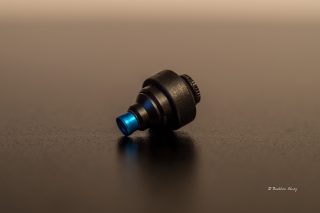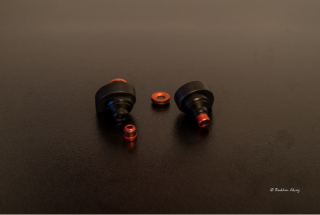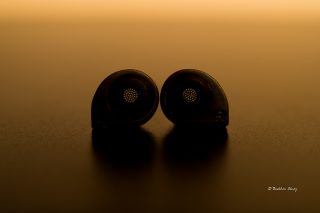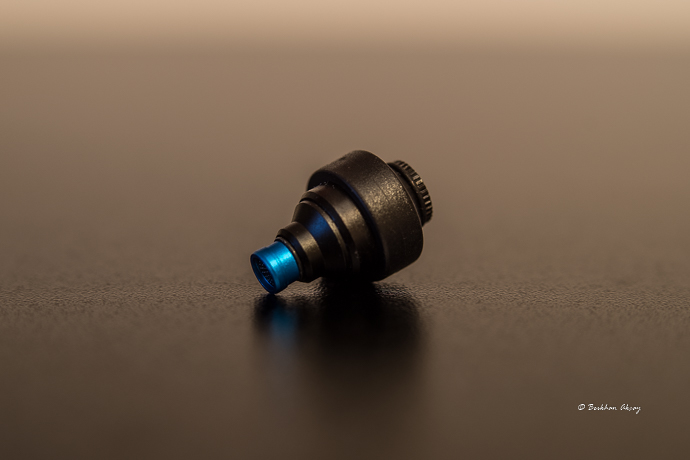LZ, The name is very short right? It also sounds very nice to spell. Actually it’s Lao Zhong in short, an audio enthusiast who likes to build IEMs.
Let’s give you a little background information about LZ and continue:
Lao Zhong describes himself as a “Hi-Fi Enthusiast”. He was a technician repairing home appliances before, and he began to have an interest in speakers and the mechanics behind them roughly 20 years ago. After that, he created his own speaker about 10 years ago. He began to make IEMs in 2015. He has a professional studio and owns a registered company. The company has 7 people working inside, including himself.
“Lao” means “old guy” or “old looking” in Chinese. So basically he’s an old guy called “Zhong”. The old man knows what he’s doing and which type of sound he wants to achieve. I can confirm this; because LZ-A4 is clearly a giant killer.
SOUND

LZ-A4 is the successor of the previous A3 with the same configuration; 2 Balanced Armatures and 1 Dynamic driver. I’ve never listened the predecessor but I guess there’s an obvious improvement because LZ-A4 sounds really great. I think we are seeing an amazing product for this price (195 USD $) and in my journey, this was one of the biggest surprises I’ve ever experienced.
Like I mentioned, this is an Atmospheric Presseure Style Hybrid Earphone, and the sound of LZ-A4 is indeed very very athmospheric. I suppose the speaker experience came pretty handy for Lao Zhung and he designed a speaker-like sound with this monitor. The sound is simply immense, wide and you can feel the ambience in recordings, especially with the live concert records.
FILTERS

Now the big news about this IEM is the filter mechanism. There are so many filters in the package, each affecting the sound. If you want to know the exact number, there are 18 possible configurations you can try. That is quite amazing. We’ve seen similar products with filter solutions but as far as I’m concerned, I haven’t seen this kind of diversity regarding filters. There are 2 filters in each earpiece, one at the nozzle and one at the back. So that makes the IEM a very interesting toy to play around.
The filter design is a very nice concept overall, but mostly I found it not very useful until now. In the end most people choose the same filters and the process is tiring. Switching filters back and forth is not intriguing to me. So why not just release the IEM with the best possible setup instead?
But LZ-A4 has an even different approach. Because of the design which allows to change both front and back filters, you can change a big part of the sound. You change back filters for bass, and nozzle filters for mids – trebles. This design gives many options to the user and helps to find the perfect balance. So this time I think filters can actually be useful unlike the similar previous models we’ve seen.
The thing that I missed the most is the inclusion of some type of a chart, to see what type of sound one would get with changing the filters, or what the maker intended. Instead, you need to experience each and every one of the options to hear the difference. At least they could’ve put some kind of guidence about that to make the process easier. Anyway, let’s get into the details.
BASS

The biggest benefit of hybrid IEMs is the naturalness of low frequencies. The sound gets some space and flows with some air with the hybrid solution, so you can receive the bass without a congestion. That plays a huge part in terms of spacious sound, of course with the help of good technicalities of Balanced Armatures on mids and highs.
LZ-A4’s bass is strong, especially at the subbass area, depending on the filters you choose of course. I usually used the black back filter and the combination of other nozzle filters, because I found the best bass response with blacks. Generally the bass hits hard but recovers pretty well for a dynamic. I didn’t come across with a loose or spreading bass. Midbass is a little laid back most of the time to assist the atmosphere, to reproduce a spacious sound. With the black filters it gives a sweet bass which is not overpowering. I think this way it’s on the sweet spot so I recommend using the black back filters.
The quality of the bass do not change drastically with filters, but with red filter I found the bass is strongest and that effects the quality a little bit. With reds, lows having some trouble in terms of hitting and recovering after that. The appreciable part is; it never shadows other frequencies even though the bass is so strong. That’s the specialty of LZ-A4; it sound spacious nevertheless.
When I tried the blue back filters I noticed the bass is a little flatter than the other two. The back filters I think play an important part for customization, as you can find the perfect bass for your liking. You want some warm and meaty sound? Go with blacks like I did. If you want more than that and if you’re an electronic music fan, go with shiny reds to have some boom-boom.
Overall, you can rely on this monitor’s bass that’s for sure. You can change the quantity with different filters and it mostly stays high quality maybe except with the reds. I felt like it shares some resemblence with the Oriolus -yes, I’m comparing a 195$ IEM with a 1300$ one so that tells something- because of the athmospheric feeling. With the open back design LZ-A4 even feels more spacious than that.
